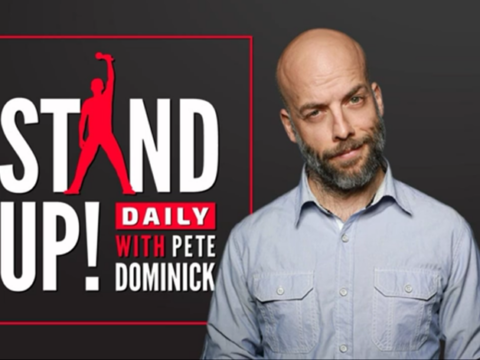- CALL US:
- (800) 969 2636
Your Guide To Podcast Advertising

INGRAHAM’S DEPARTURE FROM AM/FM SHOWS RADIO’S STRENGTH
November 20, 2018
What is Radio?
April 10, 2019The numbers are astounding. In October 2018, Americans downloaded or streamed over 550 million podcasts, accounting for roughly 80% of all podcast listening worldwide. The 2018 Infinite Dial study reports that 44% of Persons 12+ have listened to a podcast, up 40% from just a year ago. As consumer adoption grows, advertiser interest in podcasts has exploded. Total spending for podcast advertising is projected to exceed $400 million for 2018.
Listeners now have hundreds of thousands of podcasts at their fingertips, with hundreds of new ones being created every day. Content ranges from general interest to highly specialized, with a spectrum of content that allows anyone to find a program which appeals to their interests.
Podcast listeners are especially valuable to advertisers for several reasons. First, consumers consciously download podcast content with purpose and intent – they are engaged listeners. Second, podcast hosts mingle content with implied or actual endorsement of the brands that support their program, which heightens awareness of those brands.
Podcasts can be an extremely effective weapon for advertisers, but buying this new medium can be daunting. Here are a few key points to know before jumping into the podcast advertising pool:
- How are podcast ads priced?
Most podcasts are sold on the cost per thousand (CPM) model, based on impressions/unique downloads. CPMs can vary widely, from $20 to more than $100. A download counts as one impression (more on this below).
- How are podcast ads sold?
Podcast ads are usually either sold by podcast publishers such as Wondery and NPR, or aggregators such as Podcast One. In some cases, a podcast may also be sold directly by the host.
58% of ads sold are embedded, also known as “baked-in.” This means the ads are inserted prior to the podcast airing and will appear in every download of the podcast episode, whether it’s accessed today or a year from now. Baked-in ads are often voiced by the podcast hosts, providing the benefit of an implied endorsement. Baked-in ads always run immediately prior to the episode (:15 to :30 pre-roll) or midway through the episode (:30 or :60 midroll).
The alternative to baked-in is to have ads dynamically inserted. 42% of podcast ads run this way. Ads that are dynamically inserted are purchased based on the number of impressions that will be delivered. These impressions can run across multiple episodes of the podcast until all the impressions ordered are delivered. Dynamic insertion ads are usually slotted to run pre- and post-roll (:15 to :30) only.
- How is podcast audience delivery measured?
Podcasts are either played in real time (streamed) or downloaded for future listening. For baked-in ads, delivery is measured by the number of unique downloads. For dynamically inserted ads, it’s the unique downloads for the show episodes containing the ad.
- Watch out for these misleading metrics:
- “Raw” Hits – Many podcast apps issue multiple requests to download a single media file for a single listener. This ratio is determined by the software developers and has nothing to do with user behavior. The resulting raw counts are like “hits” to a website and can overstate delivery by 50% to 1000%. These “raw” counts may be reported as “downloads” or even “plays,” neither of which is correct.
- Subscribers – the number of subscribers to a podcast says nothing about whether they actually downloaded or listened to the episode.
- iTunes Rank – iTunes provides continuous rankings of top podcasts overall and in various categories. This ranking is based on recent podcast subscriptions, not audience size, so new podcasts with smaller audiences are frequently ranked higher in iTunes than those with larger, established audiences.
- Total Monthly Unique Downloads – while a useful metric, it doesn’t consider the number of episodes produced. For example, a show that produces episodes every day might deliver 7x as many downloads as a weekly show, even though both shows might have the same number of subscribers or listeners per episode.
- Unique Downloads per Episode – this may be the best approximation of a show’s audience size. Just be aware that the number of listeners for one episode aren’t the same as the listeners for another, since not every listener downloads every episode. Therefore, advertisers should insist on a minimum number of guaranteed impressions.
As you can tell, there’s a unique (and sometimes confusing) lexicon of terms and statistics that could trip up any first-time or inexperienced buyer. Trust The Radio Agency – the national ad agency with 100% of its focus and expertise in radio advertising – to steer you to your best options and manage your campaign to success.
![]() Linda Gaglione is a Media Strategist at The Radio Agency, a national advertising agency 100% focused on creating and managing sound advertising campaigns through the medium of radio. You can reach her at [email protected].
Linda Gaglione is a Media Strategist at The Radio Agency, a national advertising agency 100% focused on creating and managing sound advertising campaigns through the medium of radio. You can reach her at [email protected].




